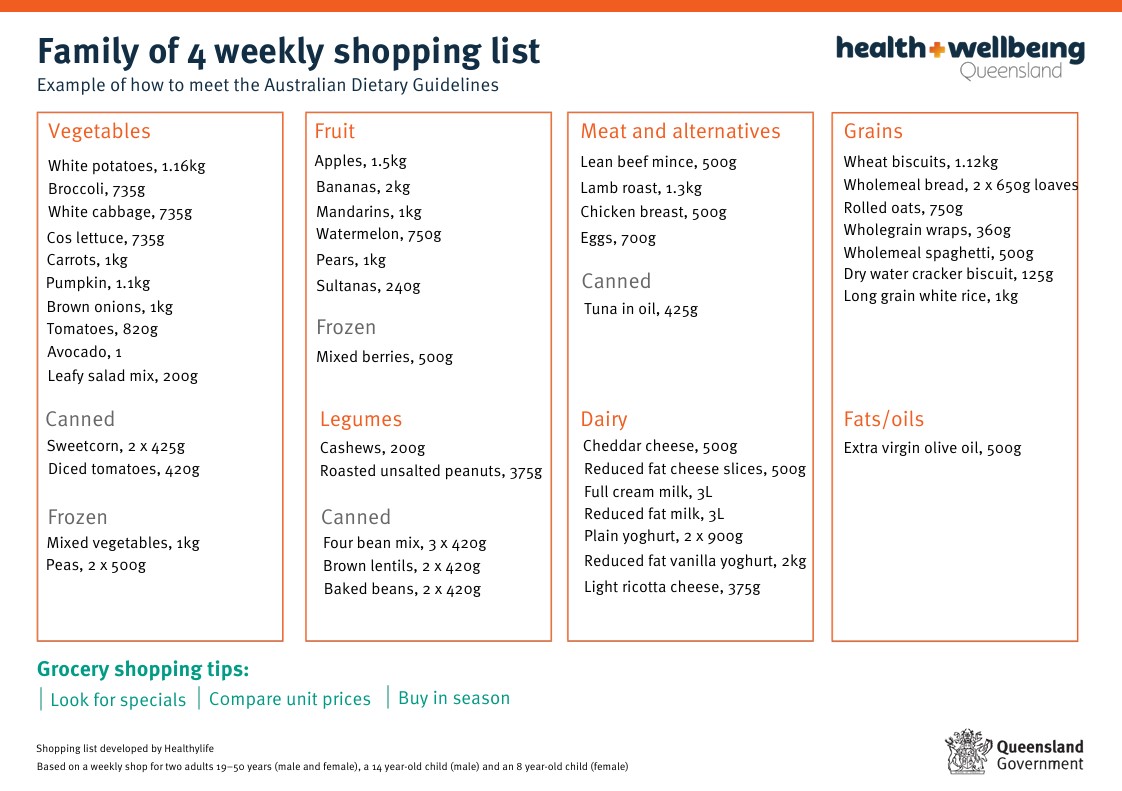Feeding a family of 4: a healthy and cost-effective wa
Feeding a family for the week while ticking both the health and cost-effective boxes can be tricky. Too many Australians are falling short of the Australian Dietary Guidelines and our diets often lack essential components like fruits, vegetables, nuts, seeds, legumes, and whole grains. The Healthylife Living Healthy Report 2024 shows our shopping trolleys are overloaded with discretionary items like sweets, snacks, and processed meats.
In this article, we share some tips on how to do a budget-friendly weekly shop that meets the Australian Dietary Guidelines for a family of 4 (2 adults and 2 children).

Building a healthy shopping list
The Healthylife Living Healthy Report 2024 shows how to build a shopping list for a typical family shop, including the recommended serves of each food group to meet the dietary guidelines. It includes some family favourite products, along with foods we could be eating more of to benefit our health and our budget.
For example, adding more legumes to your shopping list is a bonus, as they count in both the vegetable category and the meat and alternatives category – so you only need to buy them once to get nutritional benefit twice! They are also a perfect way to make your meat go further at a fraction of the cost. Throw in a can of 3 bean mix to a taco, burrito, or chilli con carne sauce, or try some chickpeas with your chicken dish.
Tweak how you shop
We understand every family has different needs, but trying some of these tips might make it a little cheaper and easier to do a healthy shop.
- Swap vegetables to be seasonal. For example, when broccoli is expensive, swap to cauliflower or frozen green vegetables such as peas or beans. Frozen veggies are just as nutritious as fresh.
- When lettuce is pricey, change the variety from iceberg, to cos or Romaine. Or try thinly sliced cabbage, spinach leaves or another green leafy vegetable, depending on what is in season.
- Fruit prices vary seasonally with stone fruit in summer and more citrus such as oranges and mandarins best for winter.
- Try the odd shaped fresh produce. It will still taste the same and can often be cheaper.
- Combine leftover vegetables with some barley or soup mix to make a hearty end of the week soup.
- Use whole grains such as brown rice, whole grain bread and breakfast cereals to fill the family for longer, and provide more vitamins and minerals. Choosing plain rolled oats for breakfast and adding your own seasonal, frozen, canned, or dried fruit with seeds and nuts can make a delicious muesli, at a fraction of the price of a ready-made variety.
- Check for weekly specials and swap around meats and seafood depending on price.
- Pop your own popcorn – it is great fun to watch and you can flavour it yourself.
- Roast a can of drained chickpeas and add some spices for a delicious, nutritious snack.
- Whole grain toast with a nut spread, cheese, or baked beans makes for a hearty after school snack.
Before you shop, plan out your family meals and then do a stock take of the fridge, pantry, and freezer, to create a shopping list. This will help you only buy what you need and reduce food waste.
Example of what to buy
Here’s an example of a family of 4 shopping list (for 2x adults, 1x teenager, 1x child) that will meet their dietary needs while being kind to the family budget.
Need some inspiration on what to make with these ingredients? Check out some healthy and budget conscious recipes.
View the Health and Wellbeing Queensland blog for more tips on how to make your family shop cheaper and healthier.